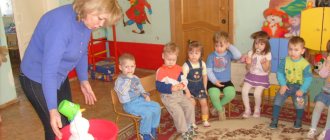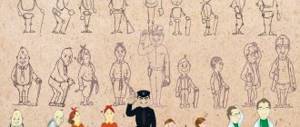Human activity
Both people and animals constantly act, but human activity has a number of distinctive specific features :
- It is of a conscious nature: a person understands why he is doing this or that business, can set goals, change types of activities;
- Aimed at obtaining a result, a product of activity;
- In its process, a person transforms both himself and the world around him;
- A person is constantly in contact with other people.
Abstract on social studies ACTIVITY - WAY OF EXISTENCE OF PEOPLE (grade 10)
Social studies lesson notes, grade 10
prepared by Osmanova Lesya Petrovna
Lesson topic:
Activity is a way of human existence
Target:
— educational:
give an idea of human activity and its diversity;
—
developing:
to form intellectual skills of analysis; to activate students’ thinking, the ability to independently draw conclusions, and develop speech;
-
educational:
instilling responsibility and duty and respect for people.
Lesson type
: combined.
During the classes
- Organizing time
- Updating basic knowledge.
- What is the essence of a worldview?
- Why is worldview often called the core of a person’s spiritual world?
- What types of worldview does science distinguish? What characterizes each of them?
- What do the concepts of “morality” and “worldview” have in common? What is their difference?
- What is the significance of worldview for human activity?
III. Learning new material.
The class is divided into groups.
TASK. Each group demonstrates the performance of some kind of work (digging, shooting, drawing, throwing stones, talking, planing a block, driving nails, etc.).
- What did you do?
- Why did you do this?
-Can we live and do nothing?
-Are we aware of what we are doing?
— Are human activities different from the “activities” of animals?
—Is activity inherent in animals?
All living things interact with their environment. Outwardly this manifests itself in motor activity. By adapting to the environment, animals can use natural objects as tools. But only human activity is inherent.
Activity
is a form of activity aimed at transforming the world around us.
Activity
- purposeful cognition and change by a person of the external world and himself.
Activity
structure Assignment: Explain each of the structural elements of the activity.
TASK: Independently or using the text from § 5, characterize each feature of the activity.
Thanks to the ability to act, a person goes beyond the capabilities that were determined for him by nature as a biological species. Only in the process of activity does a person create something that is not a creation of nature - culture.
—What is the motive of human activity?
The main motive that motivates a person to act is his desire to satisfy his needs.
TASK: Name the needs you know. After reading the text p. 47, explain the types of needs given in the textbook. Write them out.
Needs
- this is the need experienced and realized by a person for what is necessary to maintain his body and develop his personality.
Assignment: Fill out the table:
activity
motive of activity
Students write down their needs, determine what they will do to achieve them, and what their motivation is.
The need is satisfied through the good.
Good
- some material or intangible object that allows you to eliminate the feeling of shortage and solve a problem.
TASK: Give examples of what benefits you know.
People's needs are basically similar, but the set of goods that satisfy one or another need is different. It is determined both by the characteristics of the individual himself and by the specifics of the social relations into which he enters.
TASK: Write down all your needs and a set of goods that will satisfy this need.
Benefits designed to satisfy my needs
The basic unit of activity is action: any activity appears to us as a chain of actions.
In addition to needs, interests have a significant influence on human activity.
Interest
is an outcome that an individual or community believes will benefit him/her.
— How do interests influence the interaction of people in society?
The category of value is important for the study of human activity.
Value
- this is the property of a particular phenomenon or object to satisfy certain needs and correspond to certain interests.
— What are the values? (spiritual and material, individual and collective).
The value system of a person and society includes ideas about good, good, evil, happiness, the meaning of life, health, and family.
Guided by these ideas, we set goals, determine means, achieve the desired result, that is, we carry out activities.
II. Consolidation of what has been learned.
1) How are activity and goal setting related?
2) Why, of all living beings, only man was capable of activity?
3) what is the significance of activity in human life and the development of society?
4) What motivates a person to act?
5) What are the main types of needs?
6) How does society influence the set of human needs and how to satisfy them?
7) What is good? How are needs and benefits related?
 What is the difference between interests and values? What is their role in human activity?
What is the difference between interests and values? What is their role in human activity?
Homework: § 5 Document p.53 questions and assignments for document 1-3 p.54
Need
Everything a person does is aimed at satisfying his needs. They are divided into groups:
- natural (food, air, shelter, etc.);
- social (work, creativity, communication);
- spiritual (knowledge of the world, self-expression).
Psychologists (A. Maslow, S. L. Rubinstein, A. N. Leontiev and others) agree that a person cannot achieve complete satisfaction of needs. This is well illustrated by the tale of A.S. Pushkin’s “Goldfish”: the old woman, having received a new trough, wanted a hut, and then a tower, and she had more and more desires.
Human activity is planned.
- target
When implementing an activity, a person imagines in advance what he wants to achieve. For example, a tailor, when creating a thing, imagines how it will look.
- facilities
In order to accomplish this, special means are needed. For example, to write an essay you will need paper and pen or a computer, as well as books and textbooks on the chosen topic.
- result
The goal is embodied in results. These could be things, relationships, skills, and so on.
TOP 4 articles that are read along with this
- 1. Structure of activity
- 2. Cognitive activity
- 3. Man, individual, personality
- 4. Is this activity... in social studies?
Levels of need
()
A human need is a specific need that an individual satisfies in the course of conscious activity. All needs can be divided into those dictated by physiological and psychological goals, as well as those formed by society.
Hierarchy of levels of needs according to A. Maslow:
- Physiological - based on desires necessary for human survival. These include: thirst, hunger, reproduction. Otherwise they are called natural needs, that is, based on human nature.
- Existential – the need for safety, comfortable living conditions, stability and order.
- Human social needs are dictated by society and are based on the desire to have affection, communicate, and participate in joint activities with others.
- Prestigious - based on the need for recognition, respect from others and self-esteem.
- Human spiritual needs are the desire for self-realization and potential.
The indicated levels of needs according to Maslow are universal.
The basis of human natural needs is interest; it represents a state of motivation that stimulates the beginning of vigorous activity. Interests are usually divided into individual and group. When clarifying whether we need all the needs, we note that they are being implemented consistently. Speaking about what social needs are, this is a secondary interest of the individual if physiological desires are satisfied.
Online courses will help you securely retain information in your memory. Stay with us, choose an online exam preparation course
Go
Activities
There are many types of activities, so for clarity they are usually divided into groups :
- in relation to the surrounding world: practical and spiritual;
- by contribution to the development of society: progressive and regressive, creative and destructive;
- according to current standards: legal and illegal, moral and immoral;
- by the form of association with other people: collective and individual;
- in the sphere in which it is implemented: political, economic, social;
- according to the degree of originality and introduction of new things: template and creative.
Types of activity
()
From the point of view of human development, there are four types of activities that are acquired in childhood. These include:
The game is entertainment and relaxation; there is no creation of a new product. Gameplay features include:
- a special fictitious situation is created;
- objects are used that replace real objects;
- the result is the satisfaction of the desires of group members;
- teaches basic skills;
- complements the personality.
Learning is the acquisition of new knowledge and skills. The teaching is divided into:
- organized – provided in educational institutions;
- unorganized – obtained as a result of activity;
- self-education.
Labor is the emergence of an important result either for a specific person or for society. The key features of labor activity include:
- goal orientation;
- application of skills and knowledge along the way;
- presence of a useful result.
Communication is communication between subjects. During communication, people share knowledge, experience and acquired results with each other. Without communication, personal socialization is impossible.
Studying in a team makes it easier to both focus on the material and make the learning process more organized.
Variety of activities Social studies 10th grade. - presentation
Variety of activities Social studies 10th grade
Lesson plan: Types of activities. Activities. Activities. Activities. Features of creativity. Features of creativity. Features of creativity. Features of creativity. Work. Work. Work. Game activity. Game activity. Game activity. Game activity. Educational activities. Educational activities. Educational activities. Educational activities. Tasks. Tasks. Tasks.
Activities. Spiritual Practical Material-production Social-transformative Cognitive Value-oriented Predictive Destructive Creative
Creative activity An activity that generates something qualitatively new, something that has never existed before. An activity that generates something qualitatively new, something that has never existed before. Target. Target. Result. Result. Facilities. Facilities. Ways to achieve. Ways to achieve. Fantasy. Fantasy. Intuition. Intuition. Hard work. Hard work. Education. Education. “Inspiration is the kind of guest that doesn’t like to visit the lazy” “Inspiration is the kind of guest that doesn’t like to visit the lazy” P.I. Chaikovsky. P.I. Chaikovsky.
Labor activity. conscious activity conscious activity from types of activities, with certain characteristics: from types of activities, with certain characteristics: practical usefulness; practical usefulness; expected results; expected results; skill, skill, knowledge; skill, skill, knowledge; initiative, creativity. initiative, creativity.
Game activity. The goal is not the result, but. The goal is not the result, but. In childhood, play is a necessary part of development, education, and upbringing. In childhood, play is a necessary part of development, education, and upbringing. For adults, the game is preserved in the form of sports and art. For adults, the game is preserved in the form of sports and art. real actions in unreal conditions
Educational activity: The goal is to acquire knowledge and master the methods of action necessary for successful interaction with the world. The goal is to acquire knowledge and master the methods of action necessary for successful interaction with the world. The process of introducing an individual person to the experience of humanity The process of introducing an individual person to the experience of humanity Subject-subject connection: teacher-student Subject-subject connection: teacher-student Result: Result: -attitude to life, -profession
Task 1 What types of activities do these illustrations refer to? What types of activities do these illustrations refer to?
Task 2 Similarities and differences between play and work. Similarities and differences between play and work. The importance of creative activity. The importance of creative activity. Interrelation of various types of activities. Interrelation of various types of activities. How do you understand the statements: How do you understand the statements: - “Sisyphean labor” - “All the joys of life in creativity” - “The pangs of creativity”
Task 3. How can the development of creative abilities be improved at school? How can the development of creative abilities be improved in school?





